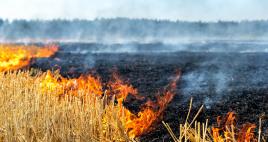Topic
Climate change & Green living
Follow the latest news on climate change, plus advice on how to live more sustainably.
How to help
Watch
 02:50
02:50
 01:12
01:12
 02:14
02:14
 01:07
01:07
 01:35
01:35
 01:20
01:20
 01:24
01:24
 01:35
01:35
 01:08
01:08
 01:45
01:45
Read more from our Yahoo journalists
- NewsYahoo News UK
Climate change will jump to a whole new level in 2024 thanks to El Niño
El Niño is already causing high surface air temperatures around the world – but 2024 will see it jump to ‘the next level’, a scientist has warned.
- ScienceYahoo News UK
World's oldest DNA by a million years 'could help battle climate change'
Scientists have identified the oldest DNA ever, beating the previous record-holder by a million years - and it could be crucial in the battle against climate change.
- ScienceYahoo News UK
Alps are ‘turning green’ as climate change becomes visible from space
Researchers found that vegetation above the treeline has increased in 77% of the Alps.
- NewsYahoo News
Flooding kills hundreds in South Africa: 'This disaster is part of climate change'
More than 300 people have been killed in flooding following days of extreme rainfall in eastern South Africa, with some areas receiving up to six months' worth of rain in a single day.
- ScienceYahoo News UK
New chaos theory finding hints that humans could control the weather
Human beings have become very good at predicting the weather - but despite various attempts, we still can’t control it.
- NewsYahoo News UK
Climate change ‘could devastate global food supplies’, researcher warns
Climate change could devastate global food supplies, a leading NASA researcher has said in an interview this week - and the effects could come sooner than we think.
- ScienceYahoo News UK
Is your vegetable oil killing the planet?
Despite palm oil receiving lots of negative press over deforestation, it’s actually not the worst in terms of greenhouse gas emissions.
- ScienceYahoo News UK
'Game changer' technology turns CO2 pollution 'into cash'
A new electrochemical system can turn carbon dioxide into a useful chemical - ethylene - which is used in everything from food packaging to car tyres.
- ScienceYahoo News UK
Wildfires caused by global warming 'are accelerating global warming'
Wildfires blazed around the world last summer, burning land from California to Siberia - and the carbon released is accelerating global warming.
- ScienceYahoo News UK
'Climate spiral' shows temperatures spiralling out of control this century
A Nasa visualisation of climate change shows temperature anomalies from 1880 to 2021 – showing how the Earth has warmed in the last 140 years.









